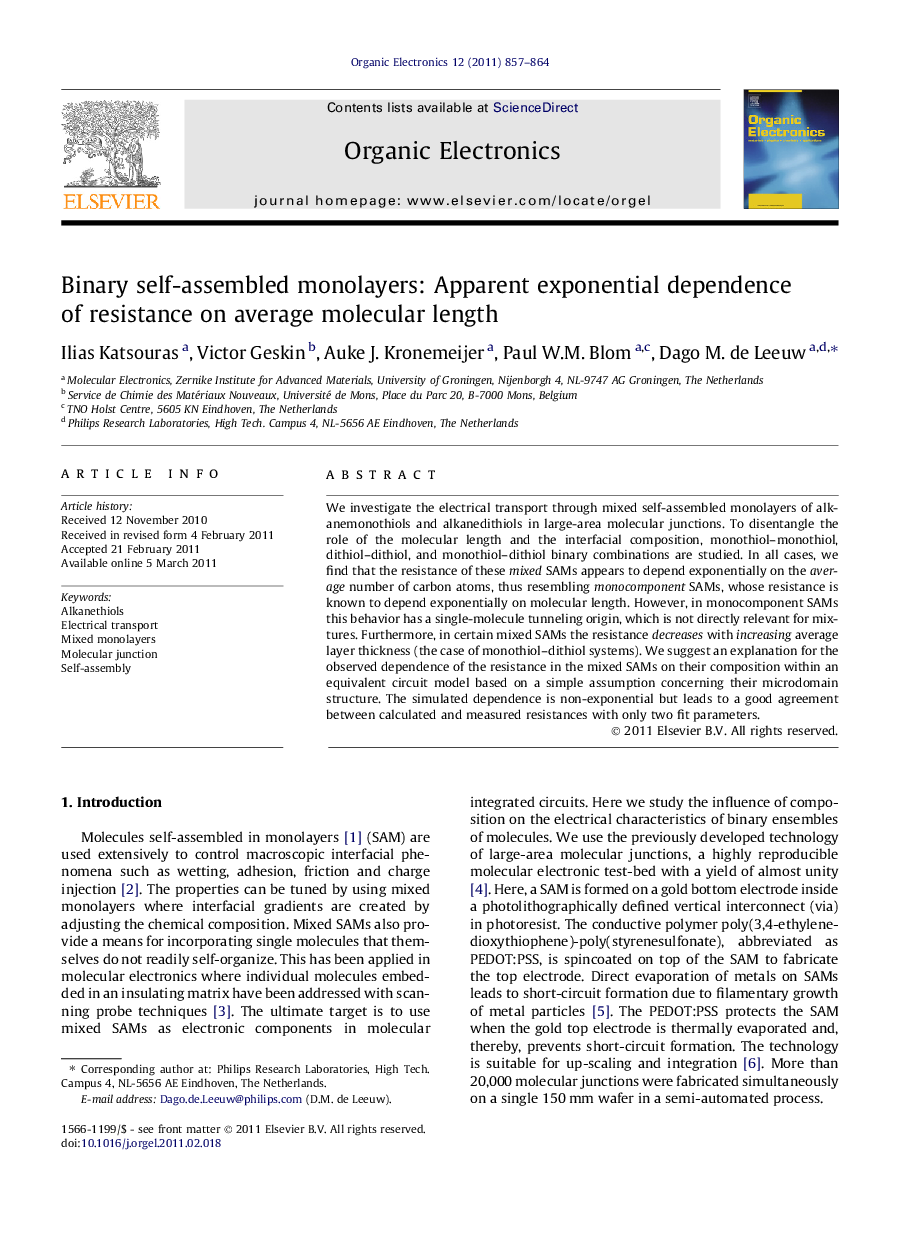| Article ID | Journal | Published Year | Pages | File Type |
|---|---|---|---|---|
| 1265364 | Organic Electronics | 2011 | 8 Pages |
We investigate the electrical transport through mixed self-assembled monolayers of alkanemonothiols and alkanedithiols in large-area molecular junctions. To disentangle the role of the molecular length and the interfacial composition, monothiol–monothiol, dithiol–dithiol, and monothiol–dithiol binary combinations are studied. In all cases, we find that the resistance of these mixed SAMs appears to depend exponentially on the average number of carbon atoms, thus resembling monocomponent SAMs, whose resistance is known to depend exponentially on molecular length. However, in monocomponent SAMs this behavior has a single-molecule tunneling origin, which is not directly relevant for mixtures. Furthermore, in certain mixed SAMs the resistance decreases with increasing average layer thickness (the case of monothiol–dithiol systems). We suggest an explanation for the observed dependence of the resistance in the mixed SAMs on their composition within an equivalent circuit model based on a simple assumption concerning their microdomain structure. The simulated dependence is non-exponential but leads to a good agreement between calculated and measured resistances with only two fit parameters.
Graphical abstractFigure optionsDownload full-size imageDownload as PowerPoint slideHighlights► Electrical transport through mixed self-assembled monolayers of alkane mono- and dithiols is investigated. ► The resistance of these mixed SAMs appears to depend exponentially on the average length. ► In certain mixed SAMs the resistance decreases with increasing average layer thickness. ► We fit the data with a simple non-exponential, power-law model based on the microdomain structure. ► We disentangle the role of the molecular length and the interfacial composition on electrical transport.
